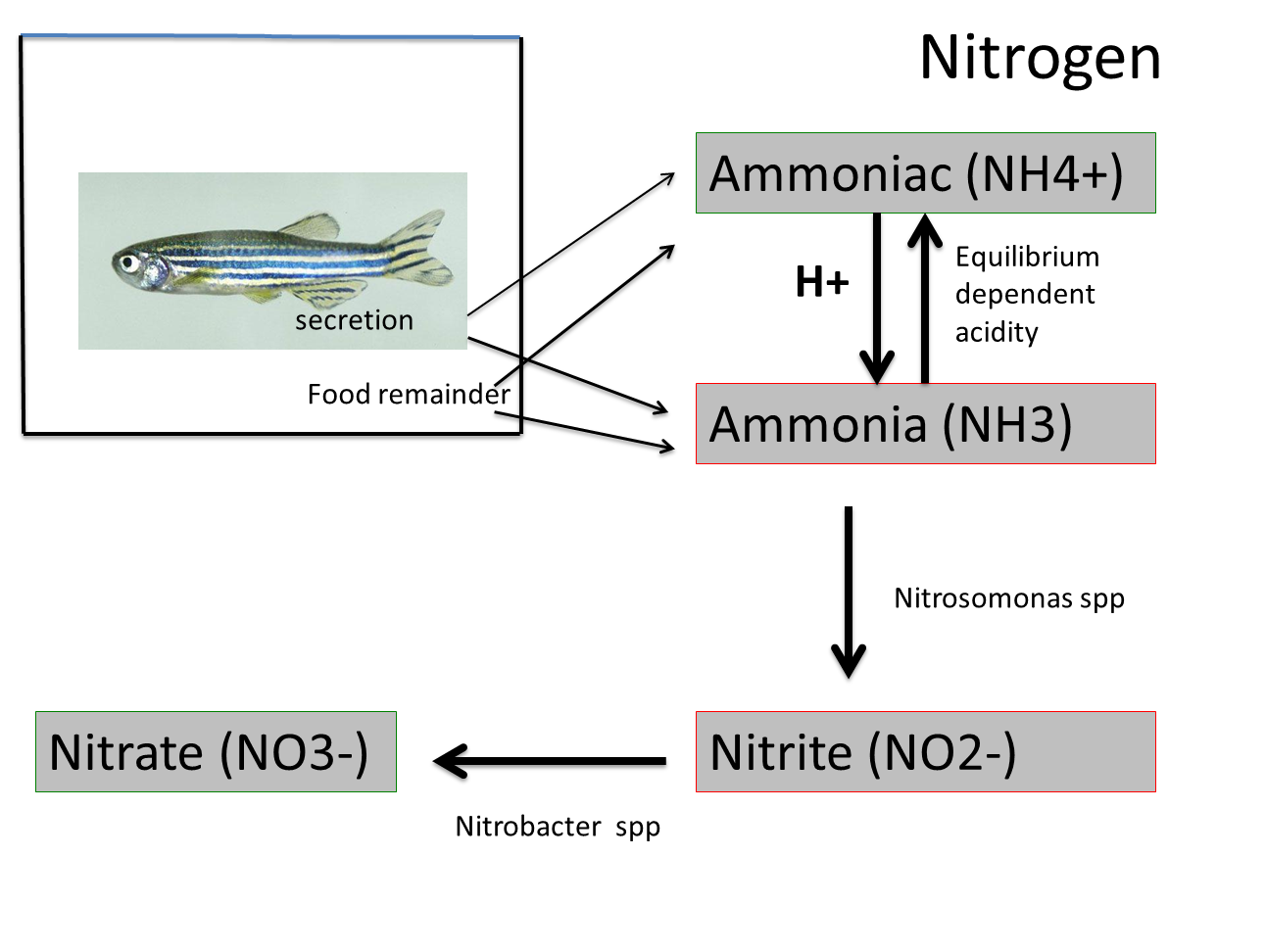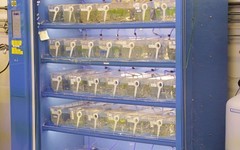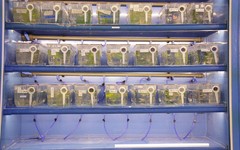Housing
In laboratories, zebrafish are housed in different types of tanks such as type II mouse cage bottoms and glass aquaria. Sometimes tanks are enriched with gravel or (synthetic) plants to reduce aggression or to offer shelter. Often tanks are arranged as part of a flow-through or recirculation system (see figures 1 and 2 for images of recirculation systems). In a flow-through system, water enters the tank at one end and exits at the other. In recirculation systems, water is reused; it circulates through the zebrafish tanks while waste materials are removed by means of mechanical, biological and chemical filters. In addition, UV filters ensure that microbes such as bacteria are killed before the water re-enters the tanks. The biological filter contains colonies of bacterial species that convert waste products like ammonium and ammonia to nitrites and subsequently nitrates. Since both ammonia and nitrites are particularly toxic to fish, the water quality must be monitored continuously. The diagram below shows the decomposition of ammonia via a number of intermediate steps to yield relatively innocuous nitrates.

Figures 1 and 2 show a recirculation system with zebrafish housed in type II mouse cage bottoms. The tubes through which the water enters the tanks at the rear are visible below, on the bottom shelf; water exits through a mesh at the front into a collection channel and then flows towards the various filters.
The water is purified in a series of filters, seen at the lower end of the system (see photograph), before being returned to the tanks.
The system shown here was designed by Fleuren and Nooijen (Someren, the Netherlands), one of several manufacturers of such systems.
The number of fish that can be housed depends on system’s cleaning capacity and the volume of the individual aquaria. Water quality is of critical importance for the health and wellbeing of zebrafish, who must use their gills, skin and mouth to maintain the stability of the internal milieu vis a vis the outside environment. As a general rule, the water quality in a tank depends on the number of fish, the amount of food dispensed and the manner in which water is cleaned and replenished. Important parameters to be monitored include ammonia, nitrite and oxygen concentrations, as well as pH and conductivity. The latter is defined as the total of dissolved solids (ions) present in the water and is measured using a conductivity meter (see ‘Physical factors in the environment’ for details).


